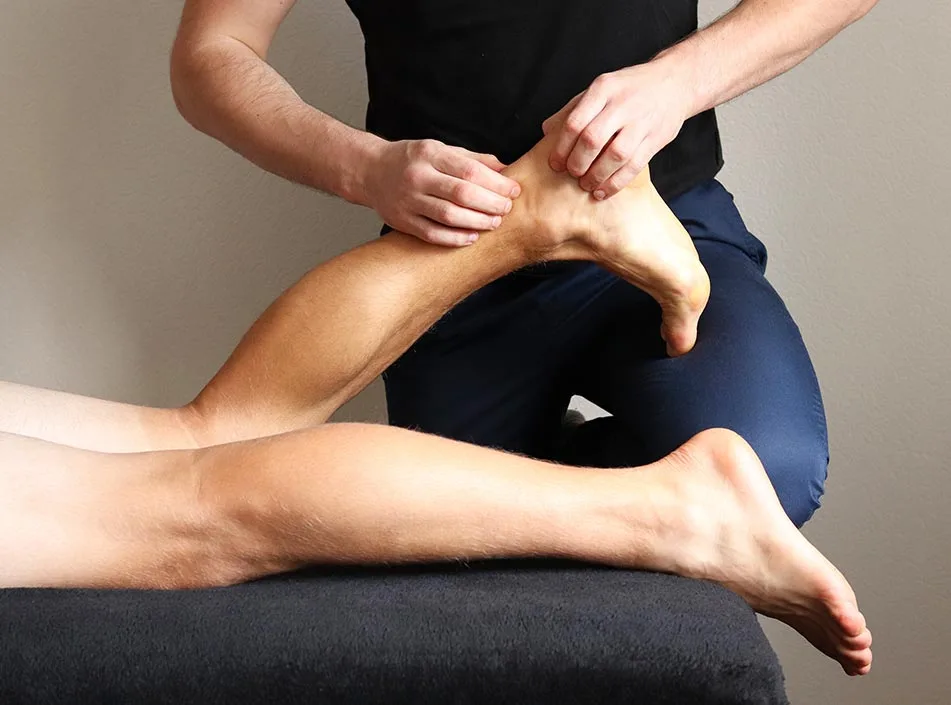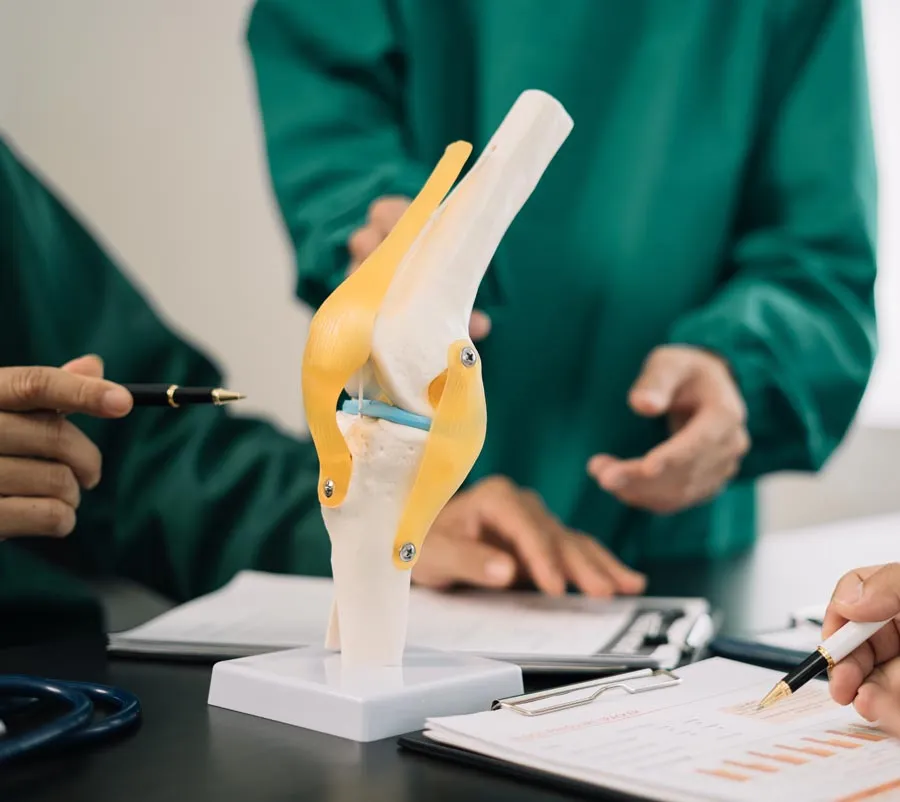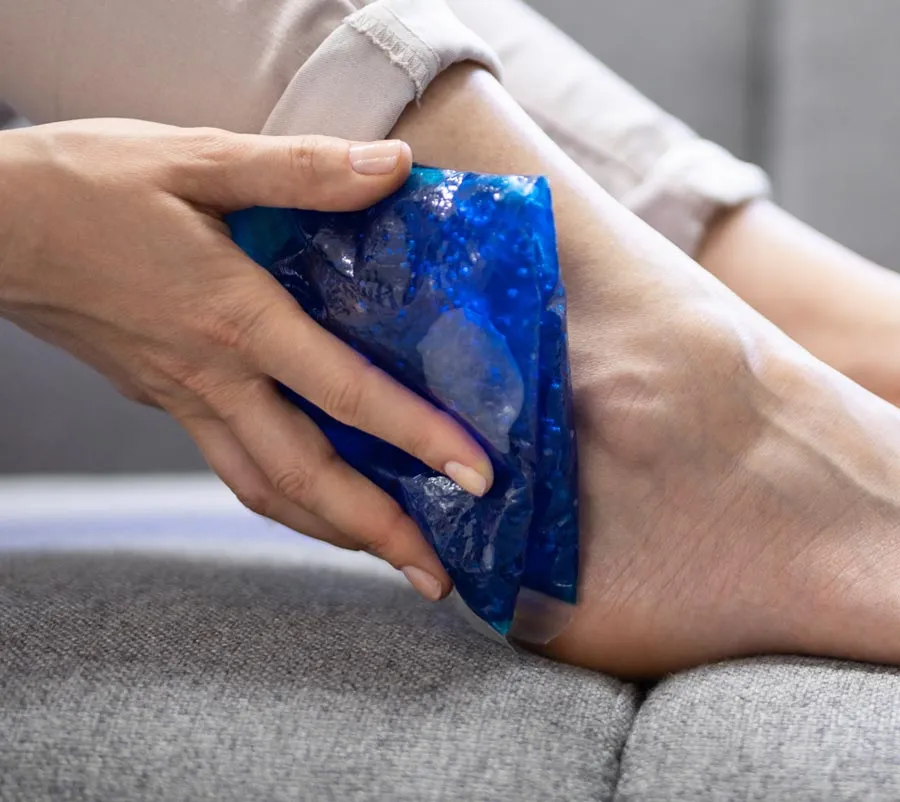
Ankle impingement is a condition that describes pinching or catching discomfort that is noted in extremes of ankle movement. This classically affects the front of the ankle (anterior impingement) when the foot if lifted upwards towards the shin (dorsiflexion) or the back of the ankle (posterior impingement) when the foot is pushed down towards the ground (plantarflexion). It can occur following an ankle injury and results in rubbing, irritation and inflammation of the soft tissues within the ankle joint. This can cause pain, swelling, and instability in the joint.

Ankle impingement is most common in athletes who participate in sports that involve repetitive movements of the ankle, such as running, jumping, or pivoting. It also occurs following an injury to the stabilising structures around the ankle.
The main symptoms of ankle impingement are:





A doctor can diagnose ankle impingement by taking a medical history, performing a physical examination, and ordering imaging tests. The physical examination will focus on assessing pain, tenderness, and swelling in the ankle joint. They will perform specific tests, forcing the ankle into extremes of range of movement and looking to see whether this induces or worsens pain.
Imaging tests that may be ordered include:
Treatment for ankle impingement typically involves conservative measures, such as:


At The Joint Injection Clinic, these injections are performed after a thorough consent process, whereby the risk and benefits of the procedure are discussed in detail with your doctor. The experienced medical doctor will then place you in a lying position on the couch. The skin is cleaned using a cleaning solution to ensure that the procedure is performed under sterile conditions. The combined local anaesthetic and steroid is injected from the skin to the ankle joint under ultrasound guidance.
The injection itself is normally completed within 30 seconds, after which a plaster is applied and post-injection advice is given. The patient is advised to look out for any signs of infection, specifically to check whether the local area becomes red, hot, tender, swollen or if they develop a fever. If this occurs then the patient is asked to contact the clinic immediately at which time a formal reassessment will occur and if needed oral antibiotics can be prescribed. The patient is also warned that following this particular injection they may notice a short-term worsening or flare in their symptoms after the local anaesthetic has worn off (4-5 hours). This may last for 3-5 days and the patient is advised to consider icing of the area using an ice pack for 10-15 minutes every hour as required.
Surgery is typically only considered for severe cases of ankle impingement that do not respond to other treatments. Surgery involves removing the inflamed or damaged tissue and repairing any underlying structural abnormalities.
If you experience any of the symptoms of ankle impingement, it is important to see a doctor to get a diagnosis and discuss treatment options. Early intervention can help to prevent further injury and improve overall ankle function.